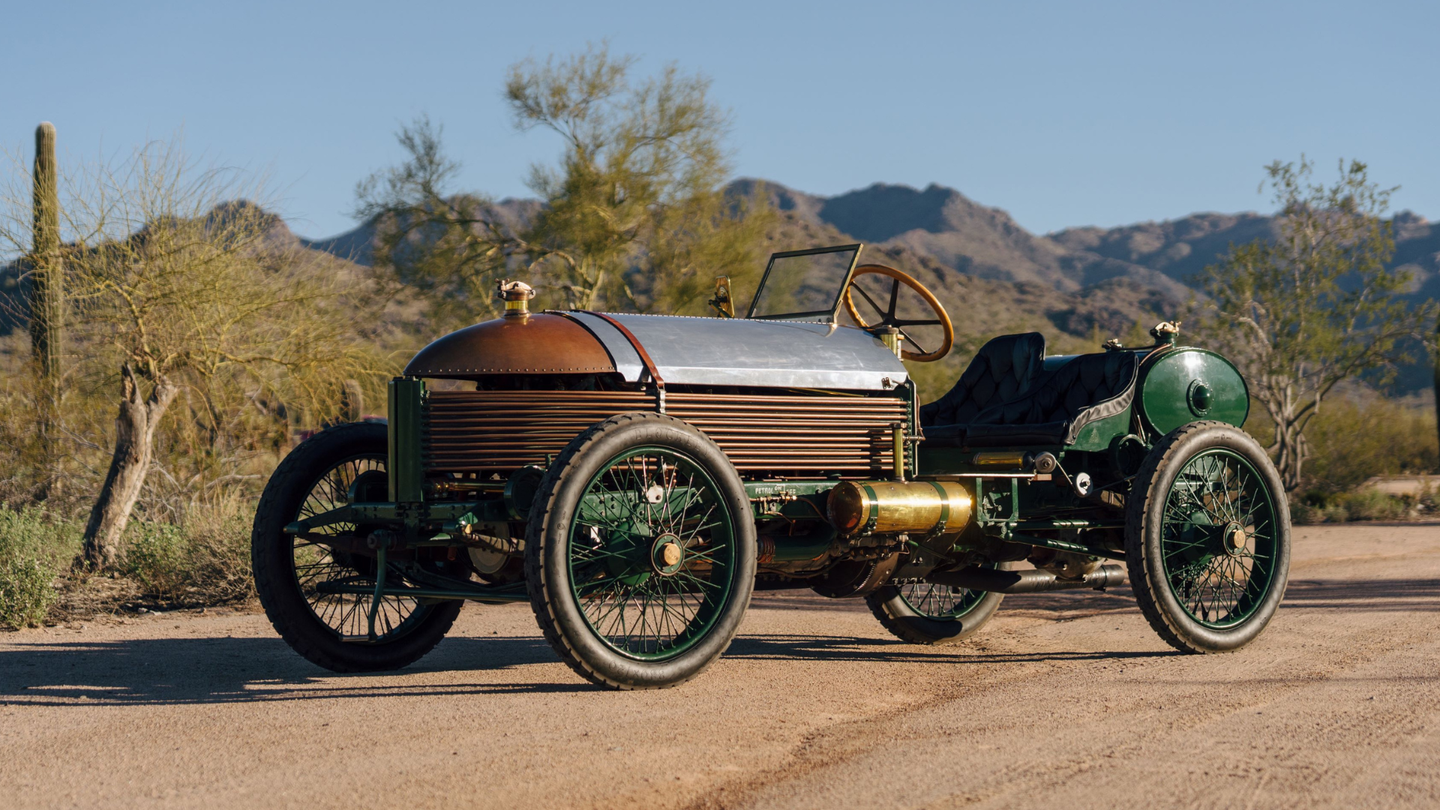The 1904 Napier Samson L48 was a celebrated racecar until it was sold for scrap. Then an Australian engineer put it back together.

The very first car to exceed 100 mph in the U.S. was a 1904 Napier Samson L48 with a 15-liter, six-cylinder gas engine under the hood. Driven by British mechanic Arthur Macdonald, the Napier set a world record for breaking the 100 mph barrier in January 1905, clocking in at 104.651 mph.
Bonhams|Cars
Napier set multiple records with the Samson (so named for its tangle of cooper cooling tubes that evoke an image of the Biblical subject of the same name), and then even more after an engine swap for a massive 20-liter beast.
Dorothy Levitt set the Women’s World Speed Record driving the Napier in 1906, a record that stood unchallenged until 1963. Later that year, driver Walter Thomas Clifford-Earp raced the Napier in a 100-mile contest against none other than Vincenzo Lancia (the Italian founder of Lancia cars) driving a Fiat and Louis Chevrolet, driving a Christie. After one of the tires exploded at mile 32 on what is now Daytona beach, Clifford-Earp ran the rest of the way on three intact tires and one Rudge Whitworth wire wheel. He won with 50 seconds to spare.
Alas, the car led a hard life, and after years of hard racing, it was sold for scrap. Both engines (the 15-liter and the 20-liter) were repurposed in a speedboat; as a result, Napier became the only manufacturer in the world to hold both the world land and the world water speed records.
Decades later, the original engine was discovered in Australia, covered in dust. Alan ‘Bob’ Hawker Chamberlain, manufacturer of Australian-made Chamberlain Tractors, decided to take on the challenge of rebuilding this iconic car and consulted with researchers along with Napier’s original schematics and photos. Chamberlain created scores of wooden casting patterns for the project, rebuilt the body around the powerplant, and started the engine once again in 1982 after 67 years of neglect.
Bonhams|Cars
The Napier Samson L48 enjoyed a second life as a show and exhibition car for a decade, and then it was consigned to Australian businessman Peter Briggs, who bought it in 1983 and cared for the Napier in the last few decades of his life.
Got story ideas? Send them to tips@thedrive.com.


